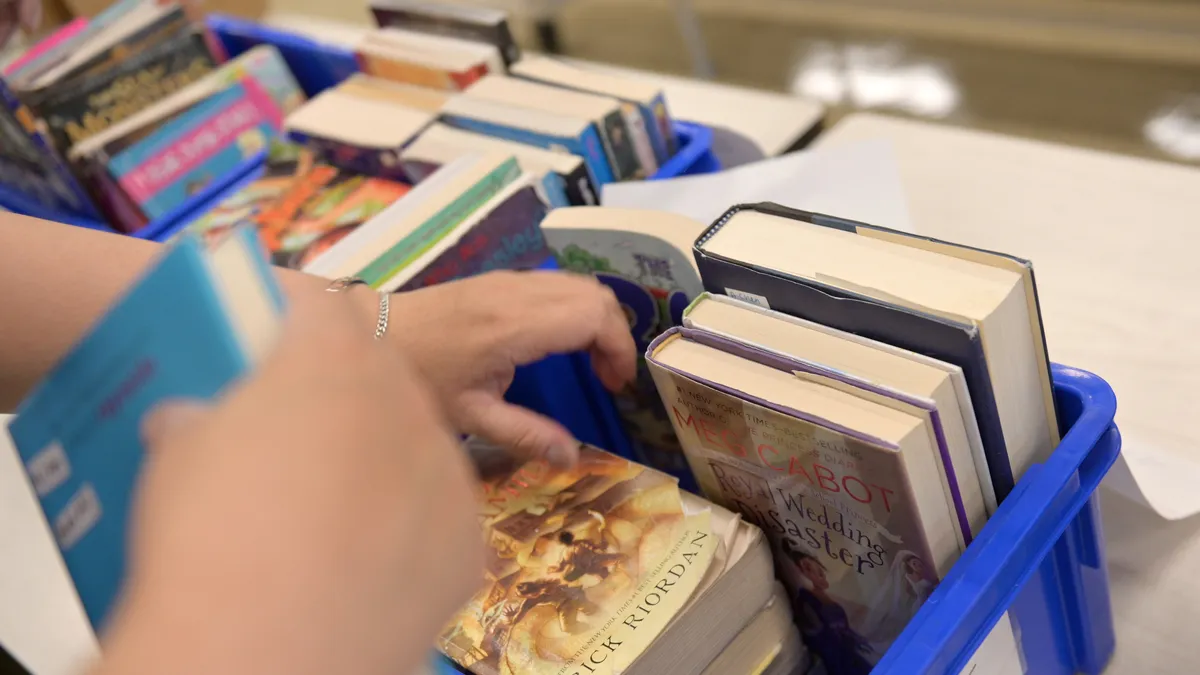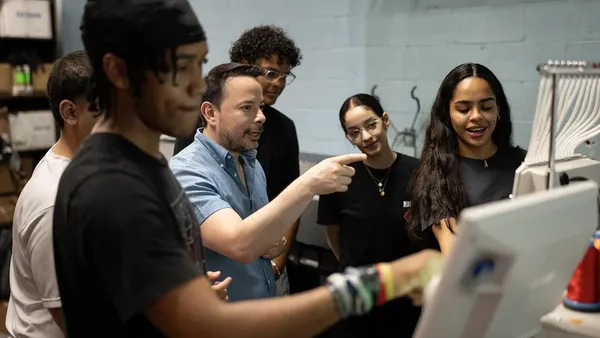Dive Brief:
- School libraries and the librarians who work in these spaces are crucial to the educational needs of students, serving as literacy, resource and research experts, Benjamin Barbour, a high school history and government teacher who has previously served as a school librarian, writes for Edutopia. And greater understanding of these roles can help educators facilitate students’ literacy skills, particularly as the number of school librarians decreases.
- Librarians help support students in their literacy journey, from finding books that scaffold struggling readers to encouraging learners to voice their own critiques. Classroom teachers without access to librarians can also supplement literacy needs by holding read-alouds or offering students suggestions on creating more conducive reading environments.
- Librarians can help design specific subject lessons, demonstrate how to uncover sources and teach proper citation rules. Without a school librarian on-site, teachers could ask public libraries for research suggestions or create their own materials collections. They can also share resources collected with colleagues, such as proper citation tips.
Dive Insight:
Librarians serve as a rich resource in lesson planning and curriculum design, bringing far more than book suggestions and reading hours into classrooms. As educators, they can assist in supplementing the educational environment by helping students learn, performing research and developing media literacy skills.
While the title can vary from “librarian” to “media specialist,” those in the role can serve as “great equalizers in the education world,” said Jennisen Lucas, president of the American Association of School Librarians.
Supplementing what students get in the classroom, librarians can teach classes how to craft well-constructed research questions, understand the proper way to use and cite sources and understand what it means to be “upstanding digital citizens,” Lucas added. Ultimately, she believes information skills, a specialty for school librarians, should be woven throughout K-12 curriculum.
“School librarians tend to be ‘big picture’ thinkers and are able to guide learners to connections between subject areas and between curriculum topics and personal interests,” Lucas said . “We carefully curate collections that support student learning with materials beyond their teacher-assigned texts so that they can explore topics more in-depth. As teachers create lessons and plan curriculum, school librarians are powerful partners for new ideas and extension of lesson ideas.”
Librarians can work with teachers and provide scaffolding for students who may need extra support, said Judy Deichman, president of the Virginia Association of School Librarians. To her, the role acts as an additional teacher, from planning lessons and projects to grading the final result, helping to broaden the learning experience for students whether in the classroom or the school library.
“The teacher and the librarian team-teach and split the workload, can differentiate instruction for students, and can give assistance to students who may need some additional help,” said Deichman. “Two teachers working together to deliver content can be an amazing thing!”






 Dive Awards
Dive Awards





